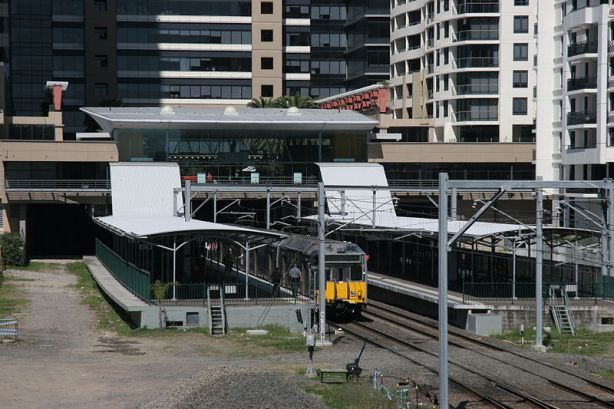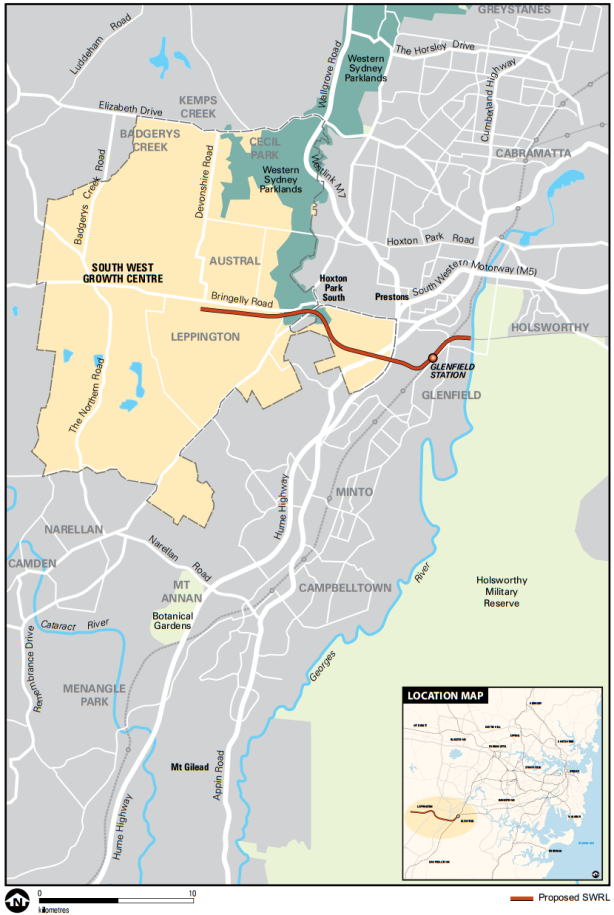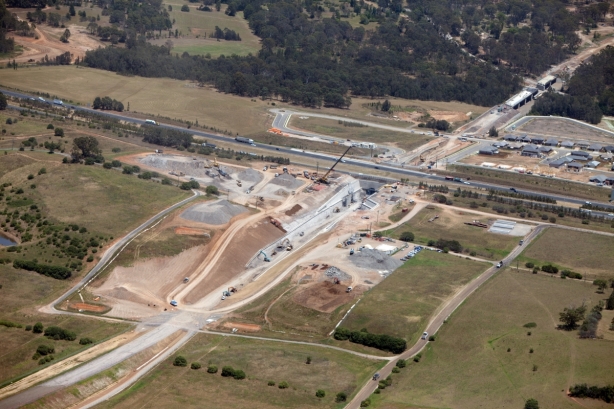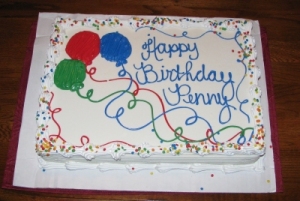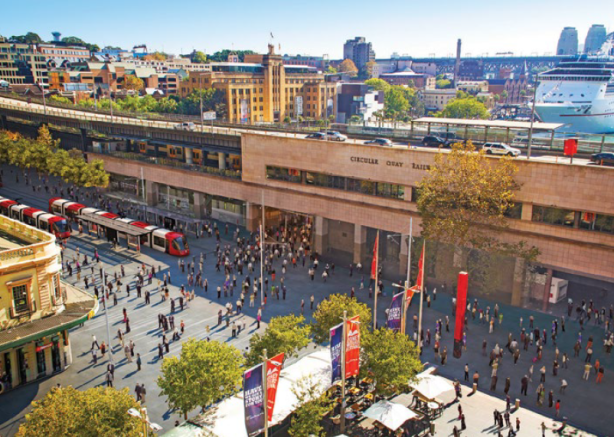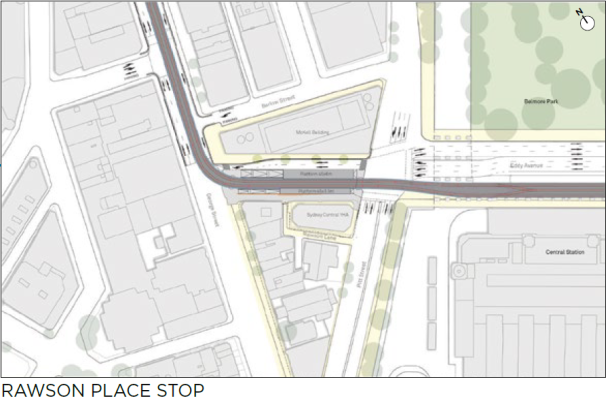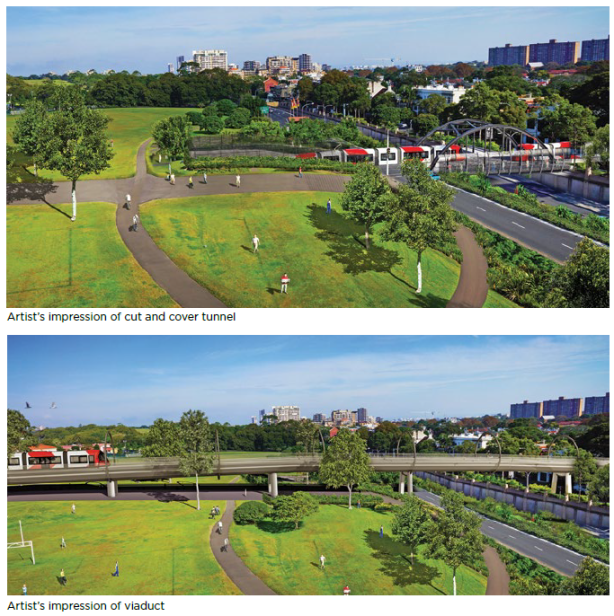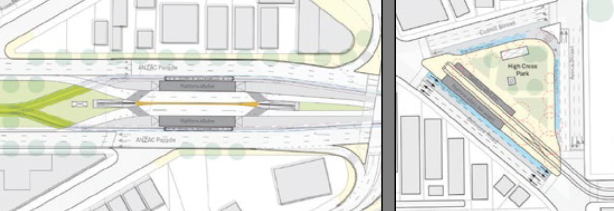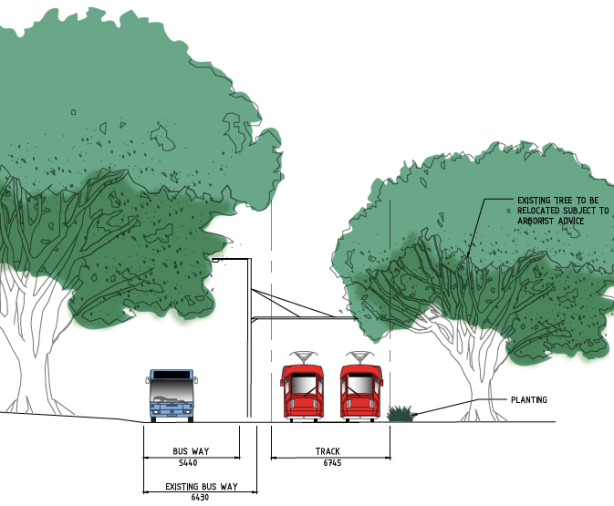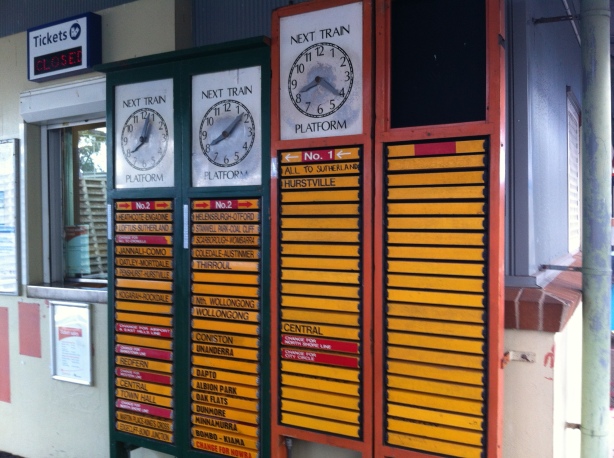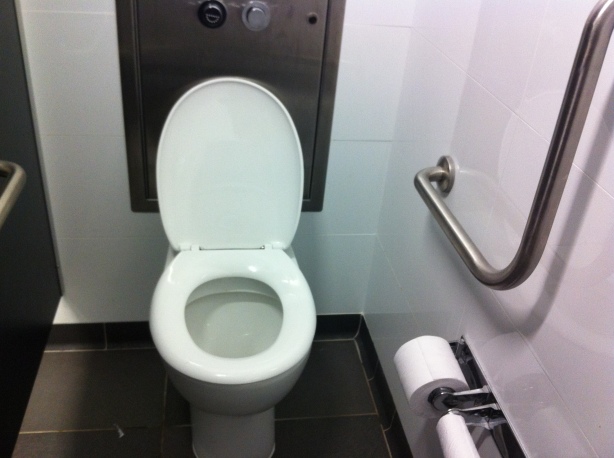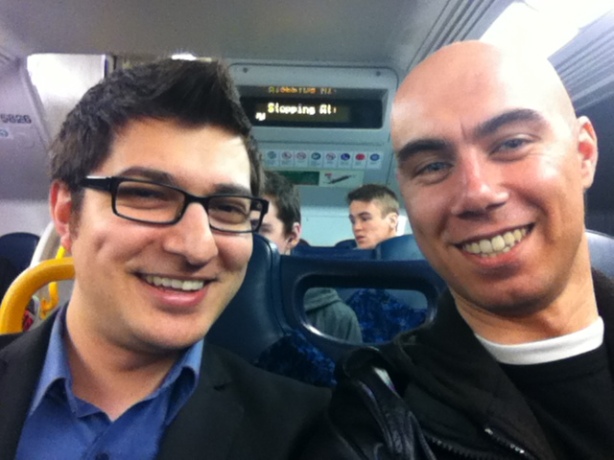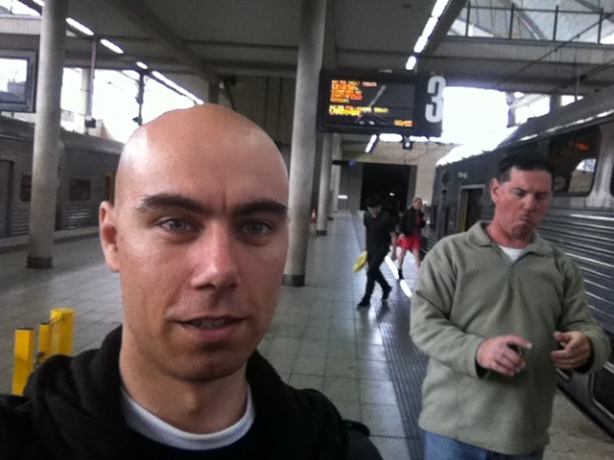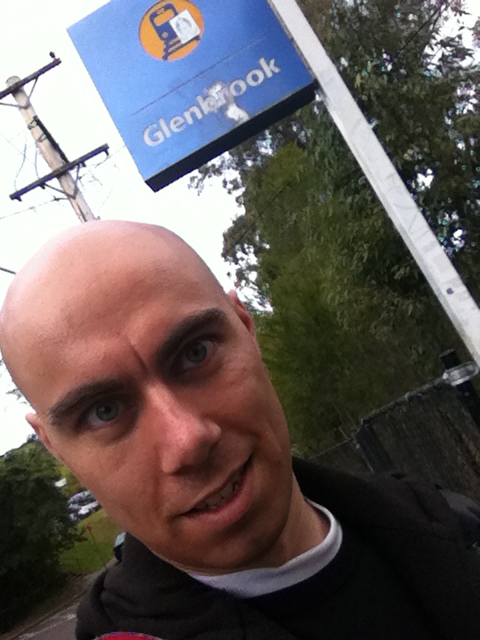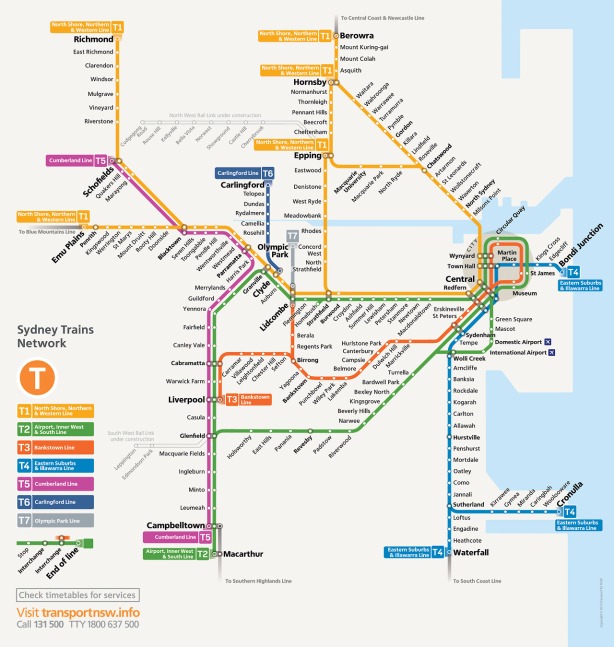The decision to make the North West Rail Link (NWRL) an independently operated single deck line that incorporates the existing Epping to Chatswood Rail Link poses a number of operational challenges.
In the short term, the line will terminate at Chatswood, forcing the 2/3rds of passengers headed further South on the North Shore and into the CBD to change to another train. Some (very rough) estimates by Transport Sydney suggest that this will lead to increased crowding on the North Shore Line, but still less crowded than the Western or Illawarra Lines.
In the longer term, a Second Harbour Rail Crossing will allow both a reduction in crowding levels and for these passengers to continue through into the CBD. However, such a project will not be completed until some time in the next decade or perhaps even later.

The Northwest Rail Link will include a new railway from Epping to Rouse Hill, plus a retrofitted Epping to Chatswood Line. Click on image for higher resolution. (Source: Transport for NSW)
A report in the Sydney Morning Herald from a few months ago claimed to have obtained internal Transport for NSW documents detailing how the government plans to deal with these problems. With some additional speculation to fill in the gaps, this is what it’s approach might be.
Having enough trains on the North Shore Line
There are currently 18 trains per hour on the North Shore Line during the busiest hour in the AM peak, carrying 15,494 passengers (measured at St Leonards). 4 of these trains come from Hornsby via Macquarie Park, 14 come from Hornsby via Gordon. 8 of these 18 trains can be rerouted via Strathfield – the 4 via Macquarie Park trains as well as 4 via Gordon trains which come in from the Central Coast. South of Epping, the previously via Macquarie Park trains will become the existing all stations trains that start at Epping and continue through the CBD and across the Harbour Bridge. Meanwhile, the previously via Gordon trains will replace the 2 new trains which start at Epping and run a limited stops service to Sydney Terminal at Central as well as the other 2 other slots available for such trains.
This may require some adjustments to stopping patterns on the Northern Line in order to allow the faster trains to overtake the slower trains on the section of the line which has 2 pairs of tracks, as a large section of the line currently only has 1 pair of tracks. It is also possible due to intercity trains from the South Coast now continuing through to Bondi Junction during the peak rather than running into Sydney Terminal, thus freeing up capacity at Sydney Terminal for additional trains from the Northern Line.
Assuming passenger loadings are evenly spread out, this should result in a reduction in passenger numbers on the North Shore Line equal to 8 train loads, or about 6,886 passengers.
The government expects 19 million passengers to shift over to the NWRL from other lines each year, which with some very rough guessing (see end of post) is equivalent to 6,800 passengers transferring from the NWRL to the North Shore Line at Chatswood.
The government also expects to reduce the number of buses from Sydney’s North West by 160 during the AM peak, changing them to operate as feeder buses for the NWRL. This equates to about 103 buses during the busiest hour of the AM peak, which is approximately 5,000 passengers (assuming 50 passengers per bus).
So adjusting the current patronage by these amounts gives: 15,494 – 6,886 + 6,800 +5,000 = 20,408 passengers per hour. The government has committed to running 20 trains per hour on the North Shore Line once the NWRL is operational, which means 1,020 passengers per train, or 113% loading (assuming 900 seats per train). This is above the current 99% average loading on the North Shore Line and also the 94% that it could drop to when the number of trains per hour is increased to 19 as part of the 2013 timetable. But it is well below the 135% crush capacity, above which long dwell time begin to result in delays. It is also below the current loading of the 2 most patronised lines on the Sydney Trains network: the Western Line (119%) and the Illawarra Line (123%).
It should be reinforced that these are not official Transport for NSW or Sydney Trains figures, but rough estimates made by Transport Sydney.
Timing the transfers at Chatswood
During the morning peak, the North Shore Line would run at 3 minute intervals, with the NWRL running at 5 minute intervals. Some North Shore trains commence at Hornsby or Berowra, and these tend to be more full than those starting at Gordon given that they have stopped at more stations and picked up more passengers. By scheduling trains that start at Gordon (plus also possibly Lindfield) to arrive at Chatswood shortly after a train from the NWRL does, then this should maximise the amount of space available on the trains NWRL passengers are transferring to, plus minimise waiting time on the platform for a train that can take as many waiting passengers as possible. Network limitations mean it is unlikely that more than 4 trains per hour can be started at Gordon, and another 4 at Linfield. By having these trains arrive at Chatswood at alternating 6 and 9 minute intervals (e.g. arriving at 8:06AM, 8:15AM, 8:21AM, 8:30AM, etc), they approximate the 5 minute intervals of the NWRL (e.g. 8:04AM, 8:09AM, 8:14AM, 8:19AM, 8:24AM, 8:29AM, etc). Thus, passengers on 8 out of every 12 NWRL trains during peak hour could quite easily just board the next train into the CBD after a 1-2 minute wait. The trouble is that 4 of the 12 NWRL trains per hour are unlikely to benefit from these relatively empty Gordon/Linfield starters, and pose the biggest threat of passengers having to wait for multiple trains before being able to board.
The installation of screen doors are likely to increase the total available space on platforms, by making available the space currently beyond the yellow line that passengers are always told not to cross. However, this would not appear to be a significant amount of space.
Northern Line capacity
As mentioned earlier, capacity increases to the North Shore Line involve moving 8 trains per hour onto the Northern Line. The 4 trains per hour that currently travel from Hornsby to Chatswood via Epping can be rerouted via Strathfield, effectively becoming the 4 trains per hour from Epping to the City via Strathfield. This reverts to the pre-2009 operating patterns before the Epping to Chatswood Rail Link opened. The 4 Central Coast trains moved from the North Shore to the Northern Line will have to terminate at Sydney Terminal, given that all slots through Town Hall, Wynyard, and the Harbour Bridge are being used by existing Western Line and Northern Line trains. This will also mean the end of the 2 additional trains planned for the 2013 timetable, which go from Epping to Sydney Terminal each morning peak.
These changes pose problems of their own. First, it replaces existing trains that start empty at either Hornsby or Epping with trains that began their journey earlier (at the Central Coast and Hornsby respectively) and have picked up passengers, thus removing spare capacity from the line. So while it will see Northern Line frequencies raised from the current 8 trains per hour to 12 trains per hour, the additional trains will be more crowded on average. Second, many parts of the Northern Line have only 1 pair of tracks, and thus lack an overtaking track for faster express trains to pass slower all stops trains.
The first problem is somewhat alleviated by passengers choosing to change at either Hornsby or Epping and travelling towards Macquarie Park/the North Shore, thus freeing up space on Northern Line trains.
The second can be alleviated by building additional track between West Ryde and Rhodes. This will result in 2 pairs of tracks between Epping and Rhodes, thus allowing the faster Central Coast trains to overtake all stations trains.
Extending the NWRL to St Leonards
Of all the possible improvements mentioned in the Herald article, it makes special mention of this one. It would allow passengers on the NWRL travelling to St Leonards to avoid having to transfer to a North Shore Line train. In doing so it would also reduce overcrowding, which as mentioned earlier could be very close to crush loads.
Fast tracking this project to be ready by the time the NWRL begins operating in 2019 would be the single best way to ease the stress caused on the network until a Second Harbour Crossing is built.
Improved signalling
Upgrading signalling in order to boost the maximum capacity of the Sydney Trains network from 20 trains per hour to 24 trains per hour would add an additional 20% capacity to the network. Transport Minister Gladys Berejiklian had previously talked about train frequencies of 24 per hour on the North Shore, but has since restrained herself to talking about 20 trains per hour. This suggests that such an upgrade is not likely to happen any time soon, probably due to the high cost of doing so.
The cost
The Herald report claims that the cost of these improvements, plus others listed in the internal document (such as new rolling stock), come to $4bn or almost half of the NWRL’s $8.3bn price tag. However, when asked about these costs during budget estimates hearings last year, Transport for NSW head Les Wielinga dismissed them as amounts that were already budgeted for. This suggests that the required track amplifications on the Northern and North Shore Lines will occur, despite no word on the timing. The Chatswood to St Leonards portion in particular would actually form the beginning of the promised Second Harbour Crossing, and therefore represents a bringing forward of future capital spending, rather than new spending.
Implementing all of these would not eliminate all the problems caused by the NWRL as planned. Upper Northern Line Stations would still lose direct access to Macquarie Park, and be forced to choose between longer journey times or making a transfer in order to reach the lower North Shore. NWRL users would still have to wait until some time next decade before getting a direct link into the CBD, and Chatswood (or St Leonards) could be strained to handle the number of passengers transferring there until that happens.
But it would be significantly better than the “do nothing but build the NWRL as currently planned” option.
Calculations
19,000,000 passengers per year diverted to NWRL from other lines
19,000,000 / 52 = 365,385 passengers per week
365,385 / 6 = 60,897 passengers per day (assuming 50% usage on Saturdays and Sundays compared to weekdays)
60,897 / 3 = 20,299 passengers per morning peak (assuming rule of thumb that patronage is one third AM peak, one third off peak, one third PM peak)
20,299 / 2 = 10,150 passengers per hour in busiest hour of AM peak (assuming half of all passengers during the 6AM-9AM peak travel during 8AM-9AM)
10,150 x 67% = 6,800 passengers per hour past Chatswood (assuming one third of passengers get off by Chatswood)
